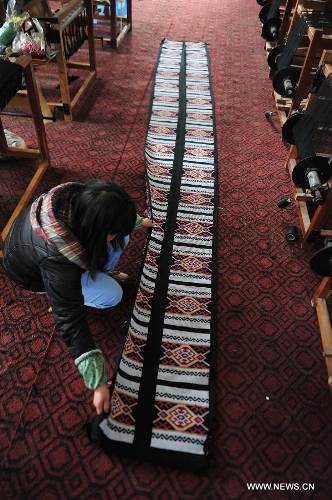
A woman of Tujia ethnic group folds a piece of Tujia brocade, known as Xilankapu in the Tujia language, at a brocade enterprise in Enshi, Central China's Hubei Province, March 10, 2014. As a traditional handicraft of the Tujia people, Xilankapu is woven with cotton and linen threads, and crosswise with cotton threads of various colors or silk threads, mainly used to decorate bedspreads. Listed in 2006 as one of China's National Intangible Heritages, Xilankapu came into full bloom in its protection and inheritance. (Xinhua/Xie Shun)
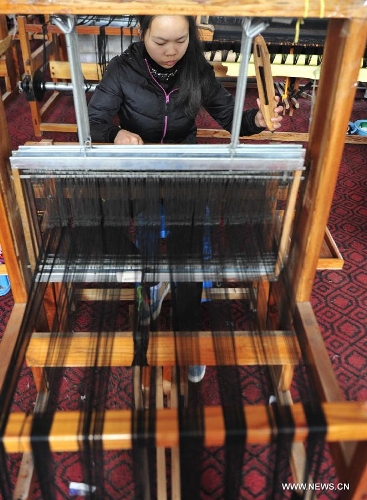
A woman of Tujia ethnic group makes Tujia brocade, known as Xilankapu in the Tujia language, on a loom at a brocade enterprise in Enshi, Central China's Hubei Province, March 10, 2014. As a traditional handicraft of the Tujia people, Xilankapu is woven with cotton and linen threads, and crosswise with cotton threads of various colors or silk threads, mainly used to decorate bedspreads. Listed in 2006 as one of China's National Intangible Heritages, Xilankapu came into full bloom in its protection and inheritance. (Xinhua/Xie Shun)
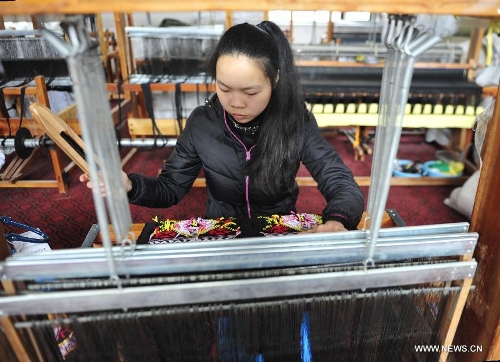
A woman of Tujia ethnic group makes Tujia brocade, known as Xilankapu in the Tujia language, on a loom at a brocade enterprise in Enshi, Central China's Hubei Province, March 10, 2014. As a traditional handicraft of the Tujia people, Xilankapu is woven with cotton and linen threads, and crosswise with cotton threads of various colors or silk threads, mainly used to decorate bedspreads. Listed in 2006 as one of China's National Intangible Heritages, Xilankapu came into full bloom in its protection and inheritance. (Xinhua/Xie Shun)
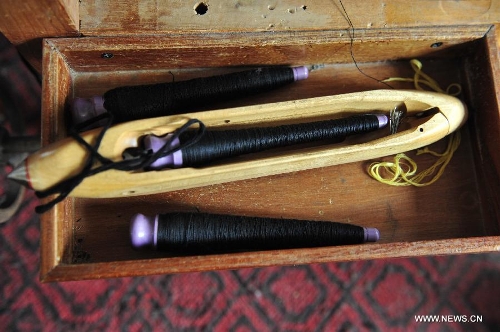
A spinning wheel used to make Tujia brocade, known as Xilankapu in the Tujia language, is seen at a brocade enterprise in Enshi, Central China's Hubei Province, March 10, 2014. As a traditional handicraft of the Tujia people, Xilankapu is woven with cotton and linen threads, and crosswise with cotton threads of various colors or silk threads, mainly used to decorate bedspreads. Listed in 2006 as one of China's National Intangible Heritages, Xilankapu came into full bloom in its protection and inheritance. (Xinhua/Xie Shun)
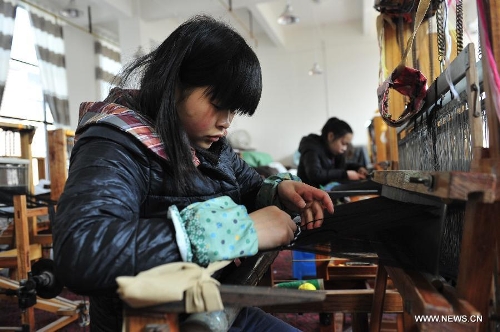
A woman of Tujia ethnic group makes Tujia brocade, known as Xilankapu in the Tujia language, on a loom at a brocade enterprise in Enshi, Central China's Hubei Province, March 10, 2014. As a traditional handicraft of the Tujia people, Xilankapu is woven with cotton and linen threads, and crosswise with cotton threads of various colors or silk threads, mainly used to decorate bedspreads. Listed in 2006 as one of China's National Intangible Heritages, Xilankapu came into full bloom in its protection and inheritance. (Xinhua/Xie Shun)
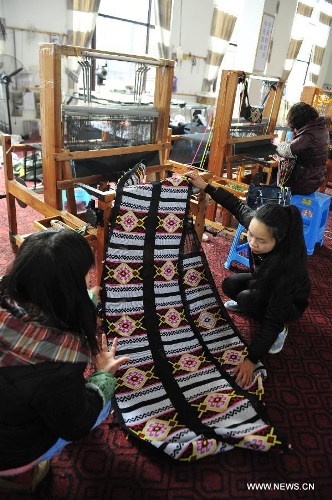
Women of Tujia ethnic group fold a piece of Tujia brocade, known as Xilankapu in the Tujia language, at a brocade enterprise in Enshi, Central China's Hubei Province, March 10, 2014. As a traditional handicraft of the Tujia people, Xilankapu is woven with cotton and linen threads, and crosswise with cotton threads of various colors or silk threads, mainly used to decorate bedspreads. Listed in 2006 as one of China's National Intangible Heritages, Xilankapu came into full bloom in its protection and inheritance. (Xinhua/Xie Shun)
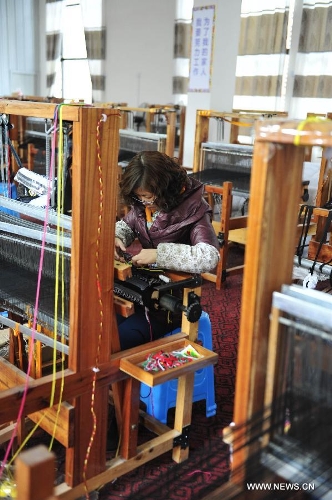
A woman of Tujia ethnic group makes Tujia brocade, known as Xilankapu in the Tujia language, on a loom at a brocade enterprise in Enshi, Central China's Hubei Province, March 10, 2014. As a traditional handicraft of the Tujia people, Xilankapu is woven with cotton and linen threads, and crosswise with cotton threads of various colors or silk threads, mainly used to decorate bedspreads. Listed in 2006 as one of China's National Intangible Heritages, Xilankapu came into full bloom in its protection and inheritance. (Xinhua/Xie Shun)
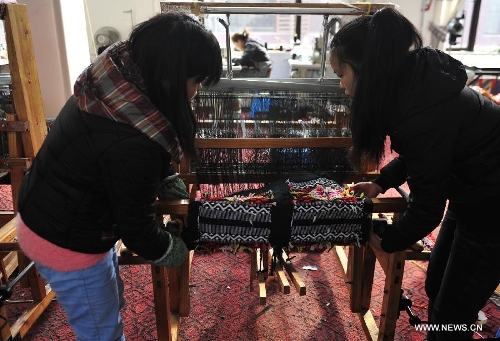
Women of Tujia ethnic group fold a piece of Tujia brocade, known as Xilankapu in the Tujia language, on a loom at a brocade enterprise in Enshi, Central China's Hubei Province, March 10, 2014. As a traditional handicraft of the Tujia people, Xilankapu is woven with cotton and linen threads, and crosswise with cotton threads of various colors or silk threads, mainly used to decorate bedspreads. Listed in 2006 as one of China's National Intangible Heritages, Xilankapu came into full bloom in its protection and inheritance. (Xinhua/Xie Shun)
